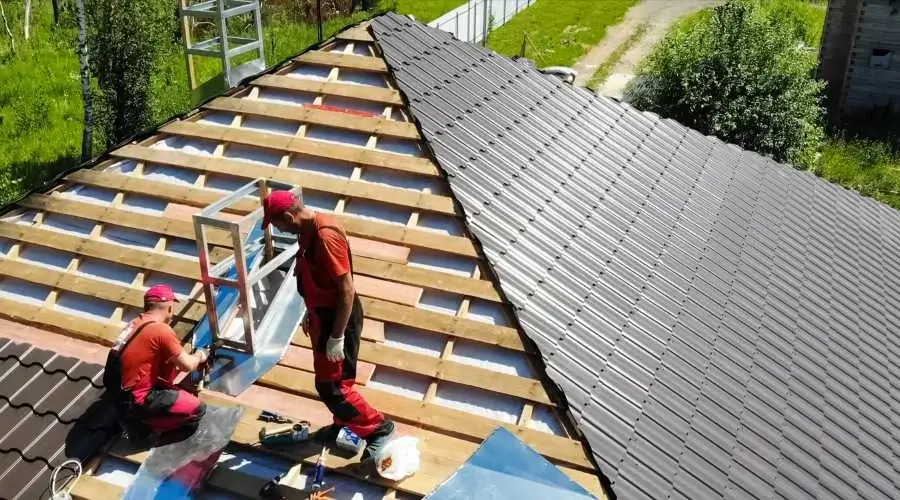Materials For Roofing That Resist Wind Damage
Are you concerned about the potential harm that strong winds could do to the roof of your house? It’s normal to feel uneasy when the wind howls and the trees begin to wobble, especially if you live in a region where strong winds frequently occur.
Your home’s first line of defense against the weather is its roof. Your home may suffer significant damage if it is unable to resist the worst circumstances. But do not worry; with the correct roofing materials, your home will be protected even from strong winds and other severe weather.
Where in the United States Are the Most Frequently High-Wind Areas?
Your home’s ability to withstand wind damage can be greatly improved by selecting the appropriate materials. However, let’s take a deeper look at where wind damage is most likely to happen in the United States before we explore the various solutions.
The greatest winds in the U.S. often occur in areas with a history of severe weather, such as hurricanes, tornadoes, and severe thunderstorms. These regions, often known as “wind zones,” are mainly found in the southeast and southwest of the nation.
Homes and other structures are particularly vulnerable to wind damage from hurricanes and thunderstorms along the Atlantic and Gulf Coasts, which include Florida, Georgia, and the Carolinas. In the southwest, places like California, Arizona, and Nevada that are prone to desert-like climates have wind zones. In these regions, strong winds are frequently accompanied by dust storms and monsoon-like weather.
Other areas that are prone to high winds include the Midwest and the Great Plain. In certain regions, tornadoes and powerful thunderstorms can seriously harm houses and businesses.
What Damage Can Wind Do to Your Roof?
A roof may sustain serious damage from wind. The lift that wind causes is one of the main reasons it harms roofs. A roof’s surface may experience a low-pressure area as the wind passes over it. Especially near the margins and corners of the roof, this low-pressure zone may cause the roofing materials to lift.
The roofing components may become loose, fractured, or even pulled away from the roof when they lift. The lift may leave the roof susceptible to water infiltration, which could seriously harm the home’s inside. Water can cause a number of issues, including the roof deck rotting and the formation of mold.
High winds can also cause roofing materials to sag or crack in addition to the lift they produce. The structural integrity of a warped roof may be compromised, which could lead in leaks and water intrusion. High winds frequently result in poor ventilation, which can damage roofing materials and reduce the lifespan of the roof as a whole.
Depending on the wind’s speed, direction, and condition of the roofing materials, the effect of wind damage on a roof can differ. Wind damage can sometimes be very small and readily fixed, but in other situations, it may call for a professional to complete roof replacement.
Regularly have a professional roofer check your roof, especially following a windstorm or other bad weather incident. A specialist can help you see any potential problems and make sure your roof is strong and secure, shielding your house and family from the elements.
How to Determine if Wind Has Damaged Your Roof
It can be challenging to identify wind damage, especially if you don’t know what to look for. However, there are a few indications that the wind may have harmed your roof:
- Shingles that are missing or damaged: Frequently inspect your roof for any indications of lifted, cracked, or torn shingles.
- Materials for roofing that are dented or twisted Rooftop materials may distort or bend in strong gusts, which could be a symptom of damage.
- Flashing that is loose or missing: Wind can cause flashing, the metal or plastic strips that cover roof seams and joints, loose or disappear.
- Leaks in the roof’s components can allow water to enter, therefore it’s critical to fix any leaks as soon as they are discovered.
- Roof debris: After a windstorm, it’s a good idea to inspect your roof for any possible tree branches or other debris that may have fallen from the sky. Debris can harm roofing materials and even obstruct drainage systems, which can result in water damage.
What Roofing Materials Work Best in High Wind Areas?
The ideal roofing material for strong winds is asphalt roof shingles are durable since they are long-lasting, inexpensive, and offer good protection against wind damage. Your roof will become the greatest roof for strong winds if you use these shingles. This is why:
- Wind resistance: Because of their hefty weight and adhesive strips that keep them firmly in place on the roof, asphalt shingles are made to endure strong winds.
- Durability: Manufacturers employ premium materials made to endure harsh weather conditions for many years.
- The cost-effectiveness of asphalt makes shingles one of the most economical roofing materials on the market.
- Asphalt shingles come in a variety of shapes and colors, making it simple to pick a look that matches the architecture and design of your home.
There are two primary types of asphalt shingles: organic and fiberglass.
Organic shingles for roads
Manufacturers create organic asphalt shingles by starting with a felt base layer, coating it with asphalt, and then covering it with ceramic granules. The following qualities of the shingles are improved by the ceramic granules:
- Durability: Organic asphalt shingles are more long-lasting and robust than fiberglass shingles because they are constructed from a thicker coating of asphalt.
- Appearance: Many homeowners prefer the more conventional, textured appearance of organic shingles.
- Better sound insulation is also provided by the thicker layer of asphalt in organic shingles, which lowers outside noise.
Asphalt Shingles Made of Fiberglass
The base of fiberglass asphalt shingles is a fiberglass mat, which is coated in asphalt and covered in ceramic granules. The following qualities are provided by the fiberglass in the shingles:
- Fire resistance: The fiberglass mat makes fiberglass shingles more fire resistant than organic shingles.
- Fiberglass shingles are easier to install and less demanding on the roof structure because they are lighter than other materials.
- Energy efficiency: Fiberglass shingles reflect more solar energy than other roofing materials, which can help reduce energy cost.
Working with a skilled roofer who is aware of the particular difficulties associated with constructing and maintaining a roof in a high-wind area is essential in addition to choosing the right roofing materials. A qualified roofer can assist make sure that your roof is properly correctly, perform routine maintenance, and safeguard your house from wind damage.
Wayne Roofing Can Help You Find Roofing Materials for Strong Winds
Selecting roofing materials capable of withstanding the worst weather conditions is necessary to protect your home from wind damage. Fortunately, you can confidently replace or repair your roof with Wayne NJ Roofing, knowing that you’re getting the best service and supplies. We have the knowledge to install the appropriate roofing materials for your area and requirements as a recognized roofing contractor with years of experience, ensuring that your roof will withstand even the heaviest winds.
The minute attention to detail we give to every job demonstrates our dedication to quality. Therefore, don’t be reluctant to contact Wayne NJ Roofing for a free inspection if you’re concerned about the effect of wind damage on your roof.
We’ll make sure that your roof is built to the highest standards possible with our expertise and dedication, allowing you to rest easy knowing that your house is safe and secure.





